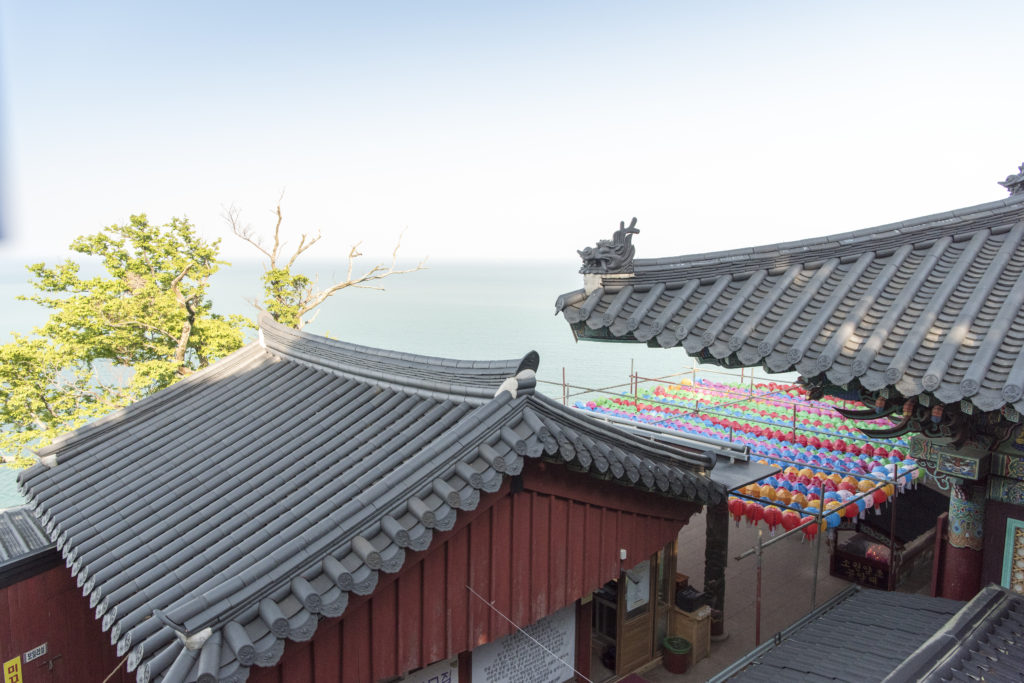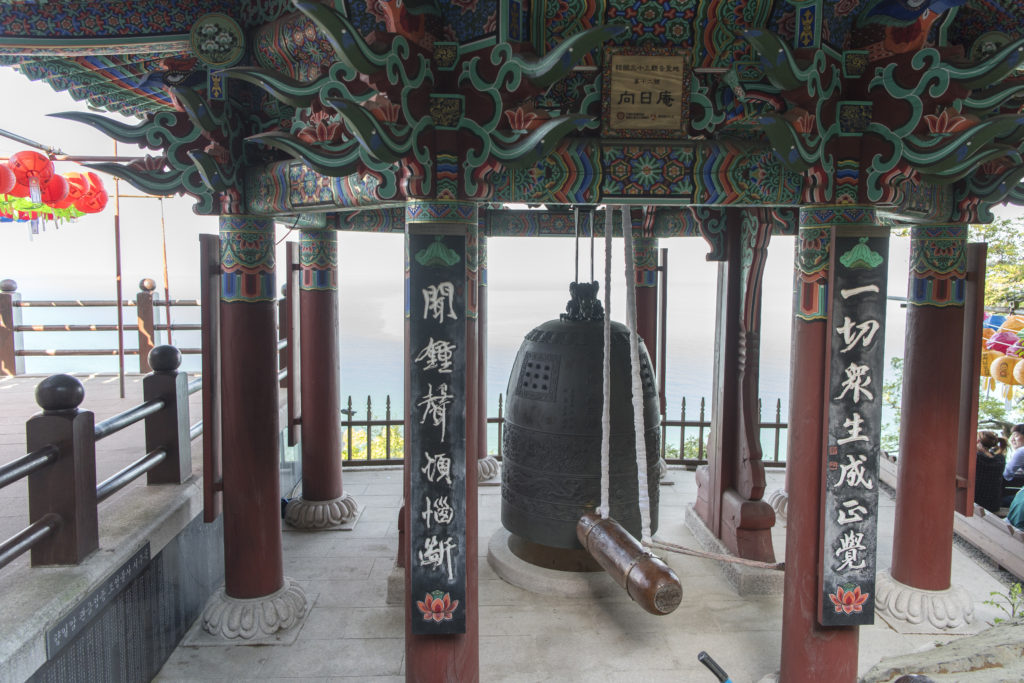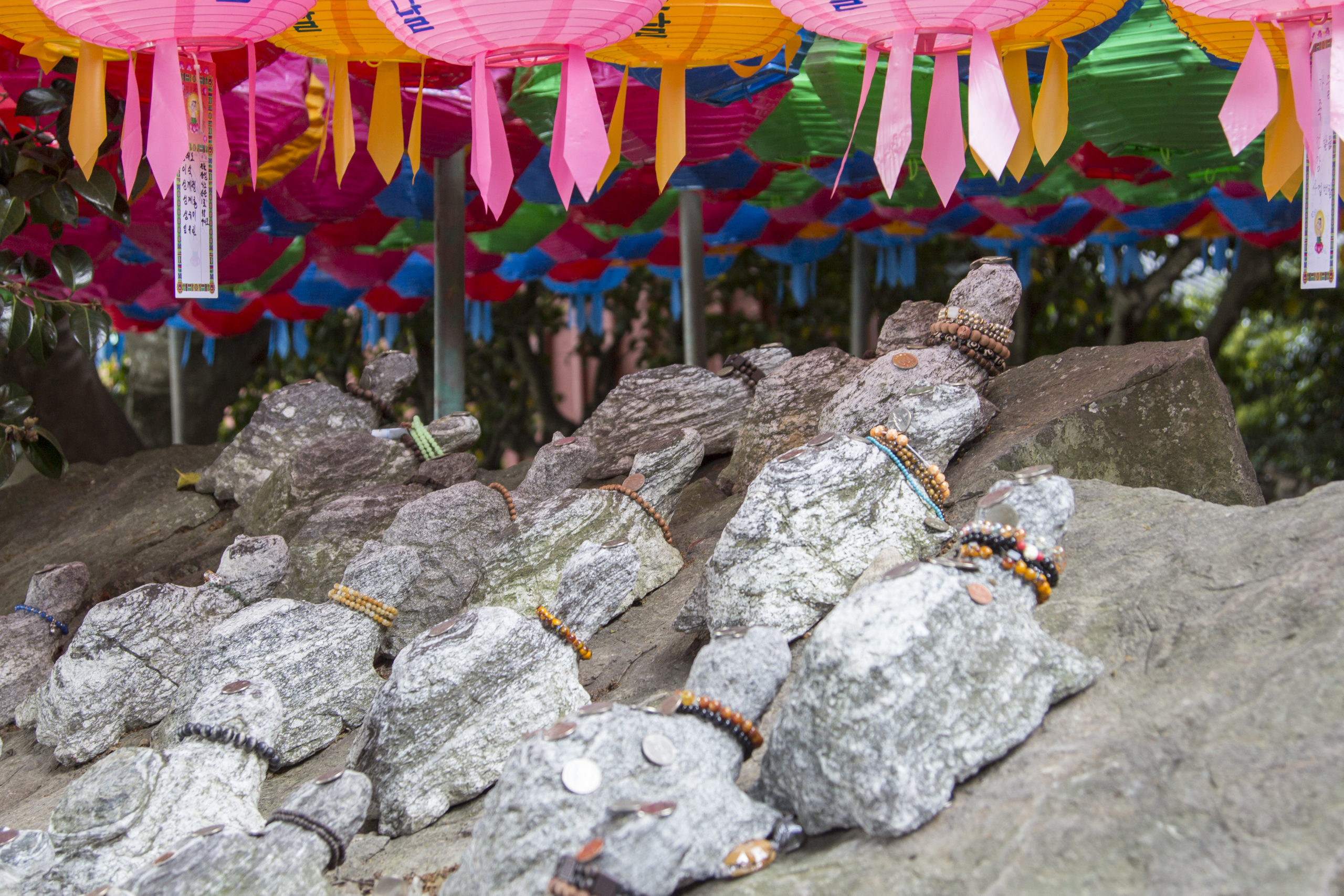Hyangil-am: Hidden Hermitage in Yeosu
Written by Melline Galani.
Since I was a child, I have gone hiking with my mother. She is the biggest fan of the mountains and used to be a mountain guide in her youth. I guess that some of her passion was passed down to me, too. When she visited South Korea for the first time in the summer of 2019, one of the places I wanted to show her the most was the hermitage called Hyangil-am (향일암) because I knew she would find it amazing – and I was right.
Located in the southern part of Yeosu, this small temple is probably the most important attraction in the area and is a very popular spot for admiring the sunrises (especially on the first day of the year) and sunsets. It is also one of my favorite places in South Jeolla Province, not only for its amazing view but also for the path to it.

Hyangil-am (Cultural Heritage Material No. 40) is one of four Buddhist hermitages in Korea where the faithful come to pray. It was originally named Wontong-am and was established by the eminent monk Wonhyo during the fourth year of the reign of Uija, king of Baekje (644 A.D.). Its name was later changed to Hyangil-am. Hyangil-am was a base camp for Buddhist monks who helped Admiral Yi Sun-sin (이순신) in his naval battles against the Japanese fleet during the Imjin War.
Hyangil-am, which literally means “hermitage facing the sun,” is not a very big temple – hermitages never are. There are seven cave passages at Hyangil-am, and as the saying goes, if you pass through all of them, your wish will come true.
What I like most about this small temple is the mountain path itself. It takes about 30 minutes to get to the temple at a slow pace. The road narrows through high rocks, and the combined smells of the sea, wood, and earth offer an incredible experience for those passionate about nature and mountain climbing. If you set your mind free from any thoughts while advancing slowly through the rocks, you will feel the sacredness of this place. Once you reach the temple, an incredible view will repay you for the effort it took to get there. The blue, infinite sea, the mountain backdrop, and the sound of Buddhist prayers all create a magical experience.

The Buddhist shrine at the top is simple – nothing spectacular if you have already seen one of Korea’s grand temples, such as those in Gyeongju. Nonetheless, this hermitage provides a quiet retreat from the city and a view that will take your breath away. There are several resting points on the trail, the first being an area with statues and next a small cafe, followed by the temple itself and, a little bit closer to the top, a great spot for meditation.
There are two trails that one can take to reach the hermitage. The quicker trail (and the most beautiful, in my opinion) has an unending array of stairs. The other trail is a gradual ascent along a dirt path (we returned to the village on this trail). In August, when the heat and humidity are at their peak, each step can be challenging but still worth climbing. Once the stairs end, the trail becomes much easier, and you will come upon the Buddhist interpretation of the “three wise monkeys” in the form of three statues of Buddha with the message “speak no evil, see no evil, hear no evil.” The challenge of this hike is to pass through a narrow crevice between enormous rocks. The crevice opens into another hidden passageway of stairs that finally leads to Hyangil-am. The temple complex has multiple prayer halls nestled in different areas of the rocky mountain. There is another pair of stairs that leads to a smaller prayer hall. The last section of hidden stairs opens onto the highest point of the temple. Another prayer hall is located there with many statues around it.

At the end of her two-week holiday in Korea, I asked my mother to choose the place she had liked most, and it was Hyangil-am. It may be yours, too.
Hyangil-am (향일암)
Address: 60 Hyangiram-ro, Dolsan-eup, Yeosu, Jeollanam-do (전라남도 여수시 돌산읍 향일암로 60)
Admission: 2,000 won (adult), 1,000 won (children)
Phone: 061-644-4742
The Author
Melline Galani is a Romanian enthusiast, born and raised in the capital city of Bucharest, and is currently living in Gwangju. She likes new challenges and learning interesting things, and she is incurably optimistic. She is currently doing volunteer work at the GIC and the Kim Daejung Convention Center, as well as for other projects with the Global Families of Gwangju.





